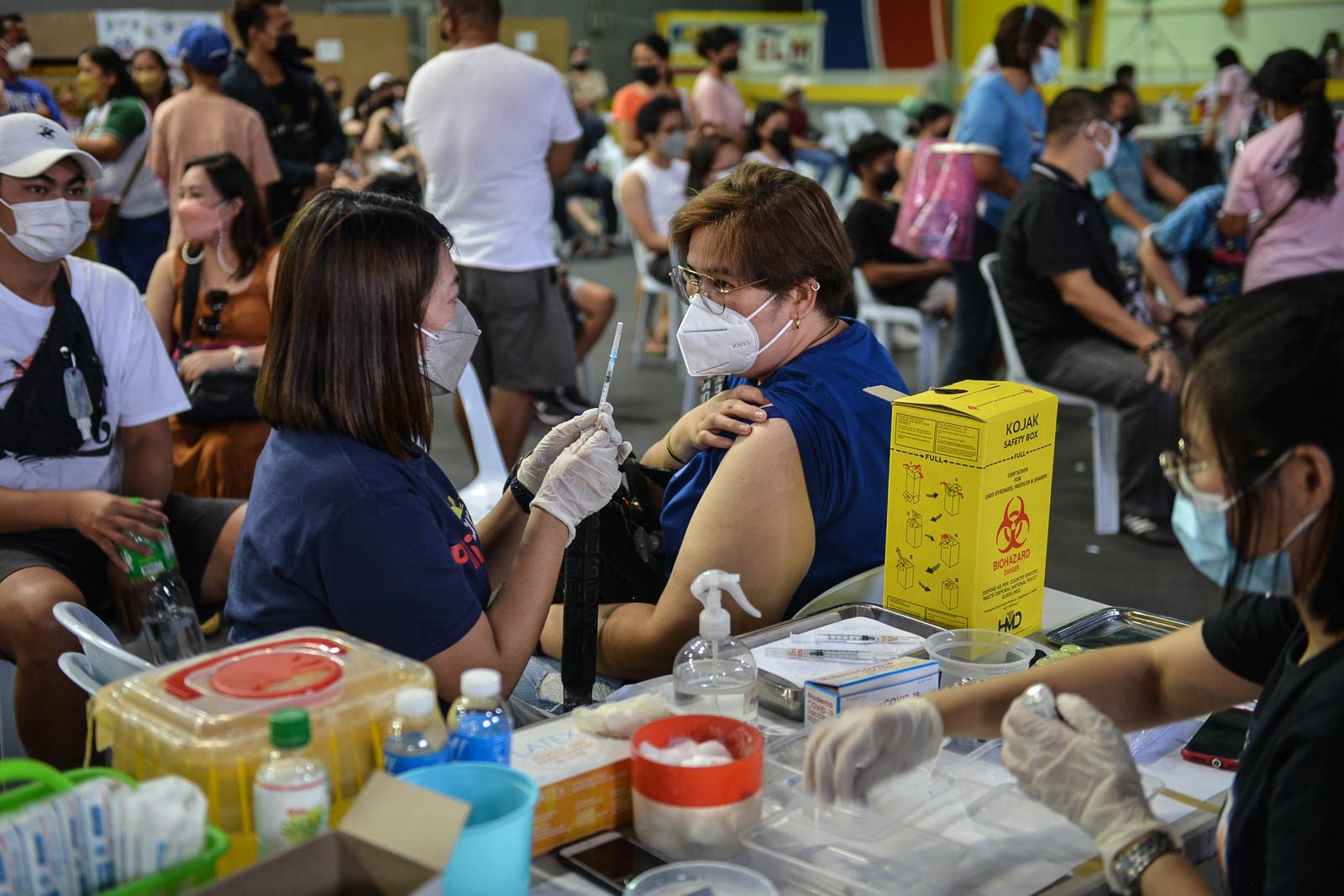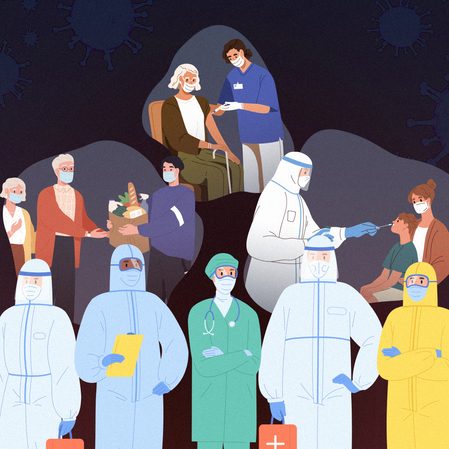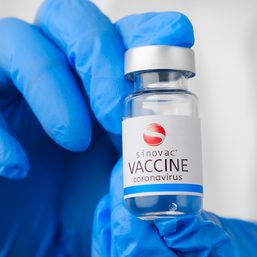SUMMARY
This is AI generated summarization, which may have errors. For context, always refer to the full article.

It was another week of back-to-back record-breaking infections in the Philippines, after cases continued to hover in the 30,000’s, a range higher than the previous bar set during the surge fueled by the Delta variant in mid-2021.
If until early January cases were significantly climbing mostly in Metro Manila, it’s now the case that all regions of the country were witnessing rising numbers. The Department of Health described the increase in all other regions as “very swift,” with cases at least eight to nine times higher compared to about a month ago.
Nationally, the Philippines is back under a “critical” risk classification.
Here’s what we’re watching this week of January 17, 2022:
2022, not ‘2020 too’
The past few weeks may have felt like a painful deja vu for many, with the Omicron variant zapping us back to scenarios we first saw in 2020. But one big thing that brings us back to the reality of how far we’ve come since then is our vaccines.
Experts in the Philippines as well as the rest of the world continue to describe vaccines as a major factor that has reshaped the risk landscape of COVID-19. This is why so many continue to call for wider and more equal access to vaccines around the world – something that is urgent and necessary to end the acute phase of the pandemic.
The question of what our vaccines can and can’t do for us is crucial to learning how to cope with COVID-19. In this edition of weekly watch, we look at four ways vaccines have made progress in the health crisis. Together, they lay out how 2022 is far from a do-over of 2020:
Metro Manila’s experience
In the two years under this crisis, Metro Manila has almost always logged the highest number of infections in the country. This is still the case, but the increase is no longer of skyrocketing proportions when it comes to severe and critical cases.
- Recent data from the Department of Health (DOH) showed that cases in Metro Manila were now 60% less likely to be hospitalized compared to non-NCR cases.
- The capital region has also seen a decrease in the proportion of severe and critical cases, while the share of asymptomatic and mild cases have increased.
- Latest data from DOH hospitals showed that around 85% of those admitted for COVID-19 were not vaccinated while about 92.3% of those who died were either partially vaccinated or unvaccinated.
- Roughly 68% of the total population in Metro Manila has been fully vaccinated as of January 17.
- NCR in particular saw a bigger increase in vaccination between the Delta-fueled surge and the onset of the holiday Omicron-fueled surge compared to the rest of the country.
These findings matter because it shows that the vaccines offered in the country – Sinovac, Pfizer, Moderna, AstraZeneca, Johnson & Johnson, Sputnik V – have been effective in meeting their primary goal of reducing hospitalizations, severe illness, and death due to COVID-19. This development further drives the need for the government to ensure enough vaccines get to the rest of the country, too.
Metro Manila was the first region to receive a deluge of vaccines because of how badly hit it was by COVID-19 – we’re now seeing the effects of these decisions play out. But other areas that were likewise under Alert Level 3, similar to Metro Manila now, have yet to achieve the same level of coverage.
The DOH said that 18 of the 99 areas under this alert level and seeing trends that mimic NCR’s spike have vaccination rates of less than 40%.
What doctors see
On the ground, doctors see a real difference in patients that need hospital care due to COVID-19. The current surge fueled by the hypertransmissible Omicron variant is giving way to what the DOH observed were two kinds of patients: those going to the hospital for COVID-19; and those with other conditions needing attention, but whom, upon undergoing admission screening procedures, test positive for the virus.
- Patients who happen to test positive for the virus are described as “incidental COVID-19” cases. These kinds of patients turn up at the hospital for issues that include appendicitis or trauma from vehicular crashes.
- Health Undersecretary Maria Rosario Vergeire said that hospital data form Metro Manila showed 88% of admissions experienced incidental COVID-19.
- But, this doesn’t mean our hospitals aren’t under immense stress. Bigger numbers of health workers are getting sick at a time when soaring cases are still leading to huge numbers of patients needing hospital care.
- Vaccines help reduce the burden to our health systems in tangible ways. Infectious disease specialist Dr. Edsel Salvana of the University of the Philippine General Hospital (PGH), one the country’s main COVID-19-designated hospitals, told reporters how:
- “Especially with fully vaccinated patients, breakthrough infections with COVID-19 are very mild. I have a patient who is over 80 years old with chronic obstructive pulmonary disease and when we had him undergo a CT scan, [his lungs] were clean. These are the kinds of patients we’re seeing,” Salavana said.
- Salvana said he also had a patients come in for diabetes and another for partial gut obstruction who were diagnosed with the virus. “They were fully vaccinated and they had clean x-rays.”
- On the flip side, the outcomes were much worse for the unvaccinated:
- “But for those who are not vaccinated who had COVID-19, most of them with severe conditions is really because of COVID-19. One of my patients who died was unvaccinated and his lungs were burnt out,” he added.
- One takeaway: “Whether that was Omicron or Delta – I don’t know – but the factor here is really our vaccines,” Salvana said.
Reinfection risks
Vaccines likewise continue to offer protection against reinfection after breakthrough infections as opposed to relying on natural immunity that comes after getting infected but staying unvaccinated.
- In an interview with ANC, infectious disease specialist Dr. Rontgene Solante of the San Lazaro Hospital said that it can take some 30 to 40 days until reinfection is possible after recovering from COVID-19. But vaccination, he said, “That will be your difference in getting more severe or mild symptoms.”
- In the case of fully vaccinated individuals who may experience a breakthrough infection, the risks of getting infected again are significantly lower, thanks to vaccines.
- Salvana said of this scenario: “If it does happen, it generally is mild. Your risk of reinfection after a breakthrough infection where you’re fully vaccinated and boosted is very, very low for any of the variants.”
- “It doesn’t mean it its zero…but the risk is much, much lower than for somebody who is unvaccinated,” he added.

Kids still vulnerable
While COVID-19 cases among the pediatric population may be less severe compared to adults, children are still vulnerable to the virus and can even require critical hospital care. Right now, kids are one segment of the country’s population still exposed to the risks of COVID-19 in ways fully vaccinated adults aren’t.
- Pediatric infectious disease specialist Dr. Anna Ong-Lim of PGH said the case had always been that the children they admitted only had incidental COVID-19. But recently they needed to add beds to respond to the increase in COVID-19 pediatric patients.
- “Many are admitted, again coming from the fact that it’s mostly children now who aren’t vaccinated, particularly in NCR. So if we have doubts about the impact of vaccines, I think looking at the pediatric experience should prove that point. Who aren’t vaccinated yet? Pediatrics. And who has many admissions now? Pediatrics,” Lim said.
- “We can really say that vaccines have a big impact and help in reducing the number of people who are sick and need hospital care,” she added in Filipino.
- Right now, only Filipinos 12 years and older are eligible to get vaccinated. Those younger, including 15.56 million Filipino children aged 5 to 11, may possibly start receiving their vaccines in a few weeks time when supply arrives.
- Pandemic officials want another 11.1 million Filipinos from 0-4 years old eligible for vaccines by the end of the year, but this will also depend on how vaccines perform in ongoing clinical trials among this age group.
Again, what children are experiencing drives home the point that vaccination is an action we take not just for ourselves but the people around us, especially those who are most vulnerable and can’t get vaccinated yet. It also underscores why, coupled with vaccination, it’s still in the public’s best interest to keep transmission low through health measures like proper mask wearing, distancing, and good ventilation.
In case you missed it: Vaccines will now be administered in select pharmacies to augment the government’s COVID-19 vaccine drive. The program will start with boosters and take place in NCR first, then expand to the rest of the country.
Catch up quick with this story:
– Rappler.com
Add a comment
How does this make you feel?


![[Rappler’s Best] US does propaganda? Of course.](https://www.rappler.com/tachyon/2024/06/US-does-propaganda-Of-course-june-17-2024.jpg?resize=257%2C257&crop=236px%2C0px%2C720px%2C720px)



There are no comments yet. Add your comment to start the conversation.